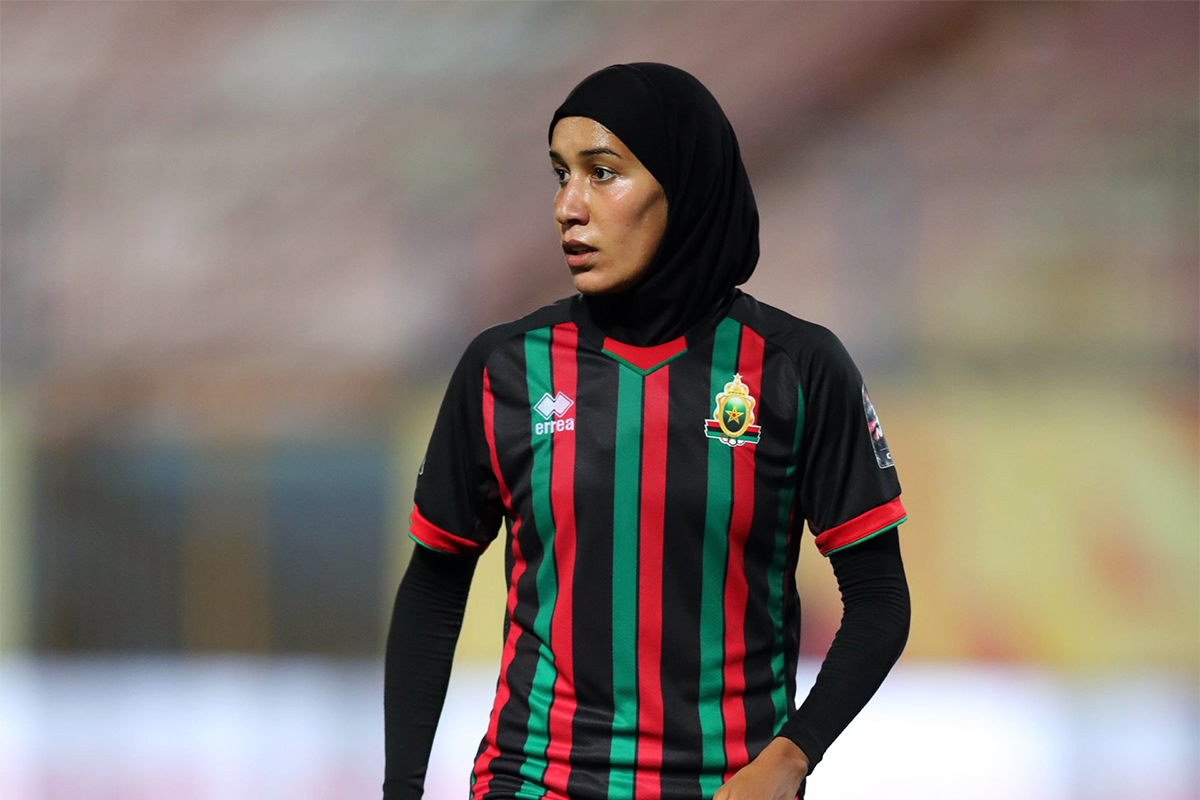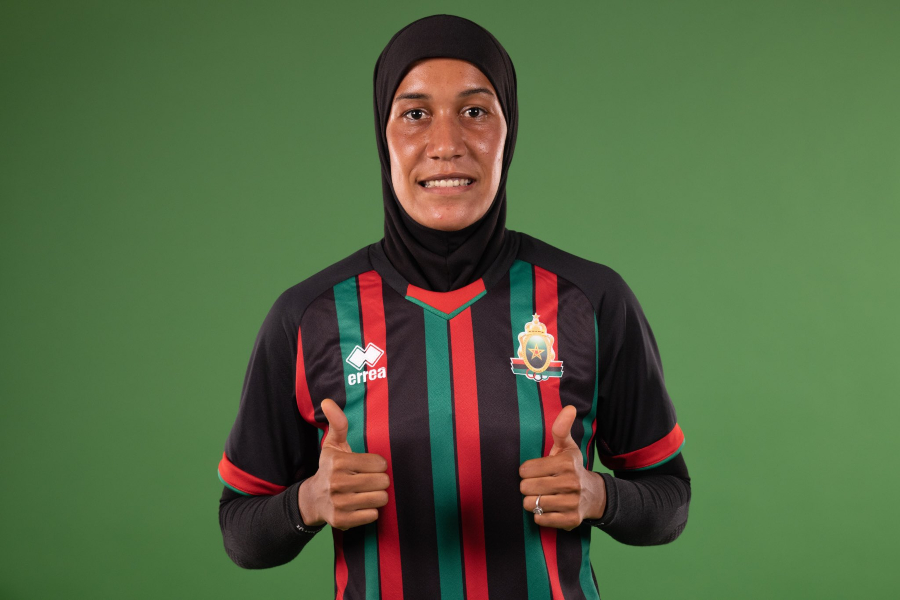- Nouhaila Benzina, the 25-year-old Moroccan footballer, is set to create history as the first hijab-wearing woman to participate in the 2023 FIFA Women’s World Cup in Australia and New Zealand.
- Morocco’s journey to the Women’s World Cup began with their groundbreaking achievement at the WAFCON tournament, where they became the first North African and Arab country to reach the final and secured their qualification for the prestigious global event.
- Benzina’s participation represents a significant milestone in promoting diversity and inclusivity in women’s football, inspiring girls and women from similar backgrounds to pursue their football dreams. Despite past challenges regarding hijabs in football, her presence at the World Cup marks progress in breaking down barriers and empowering hijabi players worldwide.
Breaking new ground in women’s football, Moroccan footballer Nouhaila Benzina is making history as the first hijab wearing woman at the highly anticipated 2023 FIFA Women’s World Cup. Out of 736 total female athletes at the tournament, Benzina will be the only one donning a ‘hijab’.
Nouhaila Benzina Paves the Way as First Hijabi Wearing Woman at World Cup
The prestigious tournament is scheduled to be held in Australia and New Zealand from July 20th to August 20th . She will be representing the Moroccan Atlas Lionesses in the tournament and currently also plays for the Moroccan Royal Army Football Club. While there have been other hijabi athletes at the junior level, the 25 year old is making the way for other senior female players. Morocco will be participating for the first time from the Middle East and North African region in the Women’s World Cup.

Benzina’s participation as the first hijab wearing woman marks a significant milestone, promoting diversity and inclusivity in the sport and inspiring young girls and women from similar backgrounds to pursue their dreams in football. The global football community eagerly awaits her performances, making this a momentous occasion for women’s football. It should be noted that inn 2007, FIFA issued a ban on all hijabs, with stating that the head scard was a safety risk to players. Seven years later, the ban was lifted. However, many countries and federations such as the French Football Federation (FFF) still continues to have a ban on the hijab and exclude hijab wearing players from playing on the field.
Also Read:
Empowering Change: The Impact of the Women’s World Cup 2023 on Women in Sports
View this post on Instagram
The ongoing conflict to be able to wear the hijab on the field while playing football has reached new heights. Teams such as Sisterhood Football Club, a Muslim female-only team in London, provide spaces for women to play the sport they love while adhering to their faith.
Morocco’s Journey From WAFCON to Women’s World Cup 2023
Last year, Nouhaila Benzina, at the age of 25, achieved a historic feat by playing a crucial role in Morocco’s revolutionary journey. They became the first North African and Arab nation to reach the final of a continental tournament, WAFCON. In a remarkable semi-final match, the Atlas Lions overcame the formidable Nigerian team, who were 11-time defending champions. The Moroccan men’s team quickly became fan favourites at the FIFA Men’s World Cup held in Qatar. The same hopes have been tied to the Moroccan Women’s Football team this year.
Also Read:
Specially-Abled Athletes from Pakistan Make Waves at the Special Olympics 2023 in Berlin
View this post on Instagram
This monumental victory earned them the distinction of being the first team from the Middle Eastern and North African region to qualify for the Women’s World Cup. However, their path ahead won’t be easy as they find themselves in a challenging group alongside favourites Germany, Columbia, and Korea.
Follow WOW360 for more.
